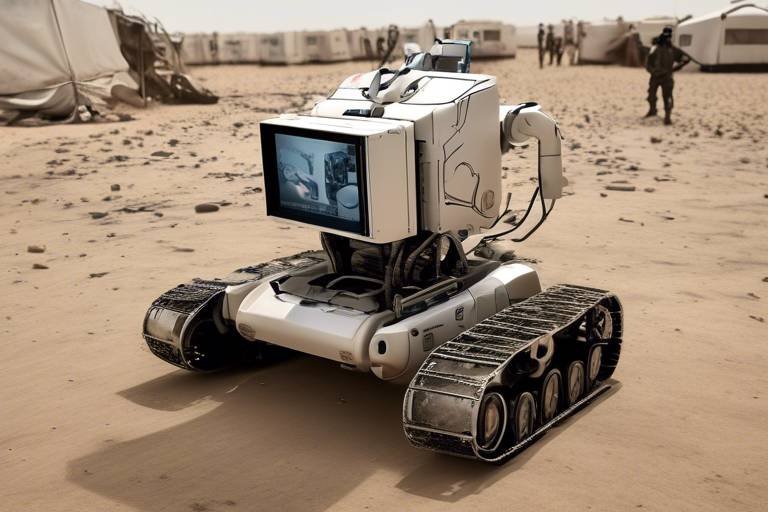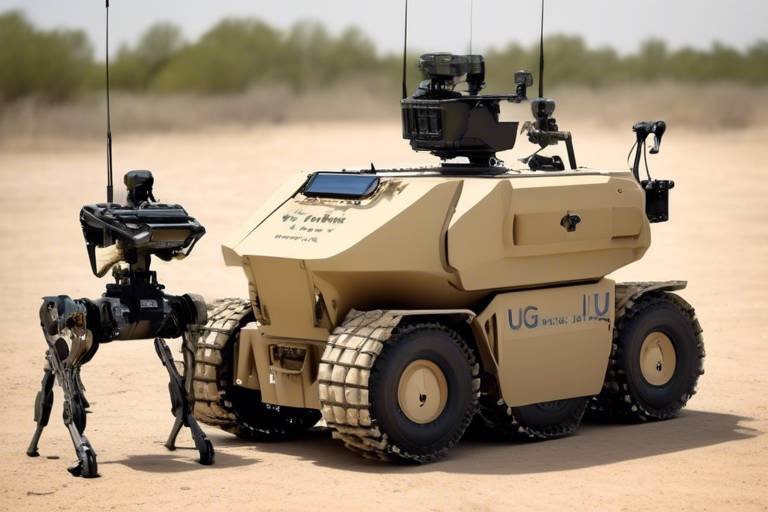The Use of the LUV (Lightweight Unmanned Vehicle) in Special Operations
The world of military operations is constantly evolving, and one of the most exciting advancements in recent times is the introduction of Lightweight Unmanned Vehicles (LUVs). These technological marvels are not just gadgets; they are game-changers in the realm of special operations. Imagine a vehicle that can fly into hostile territories, gather intelligence, and provide real-time data without putting a single soldier at risk. That's the essence of LUVs. They offer a unique blend of stealth, agility, and versatility that traditional military assets simply cannot match.
As we delve deeper into this article, we'll explore how LUVs are reshaping modern military strategies and tactics. From their operational principles to their applications in various military scenarios, the impact of LUVs is profound and far-reaching. So, buckle up as we embark on this journey into the fascinating world of Lightweight Unmanned Vehicles in special operations.
Lightweight Unmanned Vehicles represent a significant leap forward in military technology. These drones are designed to be lightweight, often weighing less than traditional unmanned aerial vehicles (UAVs), which allows them to be deployed quickly and efficiently. Operating on advanced principles of aerodynamics and robotics, LUVs are equipped with sophisticated sensors and communication systems that enable them to perform a variety of tasks. The operational principles behind LUVs include:
- Autonomous Flight: Many LUVs can operate without human intervention, navigating complex environments using onboard algorithms.
- Advanced Sensors: Equipped with high-resolution cameras and other sensors, LUVs can gather critical intelligence.
- Real-time Data Transmission: LUVs can relay information back to command centers instantly, facilitating swift decision-making.
This combination of features makes LUVs an invaluable asset in modern warfare, allowing military forces to maintain a strategic edge over adversaries.
LUVs have found their way into various military operations, proving essential in enhancing operational efficiency and effectiveness. Their applications range from intelligence gathering to target acquisition, and their versatility is unmatched. Let’s look at some specific scenarios where LUVs shine:
One of the primary roles of LUVs is conducting surveillance and reconnaissance missions. These vehicles can infiltrate high-risk environments, gathering critical intelligence without risking human lives. Imagine sending a LUV into a conflict zone to monitor enemy movements. This not only provides invaluable information but also allows for the planning of tactical operations with precision.
The technology behind LUVs is nothing short of remarkable. They are equipped with advanced sensors that facilitate real-time data collection. This capability is crucial during military operations, where timely information can mean the difference between success and failure. For instance, LUVs can provide live feeds of enemy positions, allowing commanders to make informed decisions on the battlefield.
Another fascinating aspect of LUVs is their design, which allows for stealthy operations. These vehicles employ various evasion techniques to minimize detection, enhancing their operational success in hostile territories. The combination of low radar visibility and quiet propulsion systems makes LUVs particularly difficult to spot, providing a significant advantage in reconnaissance missions.
Beyond reconnaissance, LUVs play a critical support role in combat scenarios. They assist ground troops in various ways, including logistics, communication, and direct support during missions. For example, LUVs can deliver supplies to troops in remote locations, ensuring they have the resources they need to succeed. Additionally, they can relay communications between units, enhancing coordination and effectiveness on the battlefield.
The integration of LUVs into military operations offers numerous advantages. These benefits include:
One of the standout advantages of LUVs is their cost-effectiveness. They are generally less expensive to operate compared to traditional aircraft. This cost savings can be significant, especially when considering the budget constraints many military organizations face. By deploying LUVs, forces can achieve their operational objectives while keeping expenditures in check.
The lightweight nature of LUVs allows for quick deployment and adaptability in diverse environments. Their ability to operate in various terrains and conditions enhances overall mission success rates. Whether it's a desert, forest, or urban landscape, LUVs can be deployed rapidly, providing commanders with the flexibility they need to respond to evolving situations.
Despite their advantages, LUVs face several challenges and limitations. These hurdles can impact their effectiveness in special operations. Some of the prominent challenges include:
While LUV technology is advancing rapidly, certain technical limitations can hinder performance. These may include battery life constraints, sensor limitations, and issues with data transmission in challenging environments. Addressing these technical challenges is crucial for maximizing the potential of LUVs in military operations.
Additionally, LUVs may encounter operational constraints such as environmental conditions and regulatory issues. Weather can significantly impact their performance, and regulatory frameworks can restrict their use in certain areas. Understanding and navigating these constraints is essential for effective deployment in special operations.
Q: What are Lightweight Unmanned Vehicles (LUVs)?
A: LUVs are advanced, lightweight drones designed for military operations, offering capabilities like surveillance, reconnaissance, and logistical support.
Q: How do LUVs improve military operations?
A: They enhance operational efficiency by providing real-time intelligence, reducing risk to personnel, and offering cost-effective solutions.
Q: What are the challenges faced by LUVs?
A: Challenges include technical limitations, environmental constraints, and regulatory issues that may impact their deployment and effectiveness.

Overview of LUV Technology
Lightweight Unmanned Vehicles (LUVs) are revolutionizing the landscape of military operations, providing capabilities that were once thought to be the stuff of science fiction. Imagine a small, agile vehicle soaring through the skies, equipped with cutting-edge technology that allows it to gather intelligence without putting human lives at risk. This is the essence of LUV technology. Designed to be lightweight yet robust, these unmanned vehicles are engineered for a variety of missions, from reconnaissance to logistics support.
At their core, LUVs are an amalgamation of advanced materials and sophisticated electronics. The use of lightweight composites not only reduces their weight but also enhances their maneuverability, allowing them to operate in a wide range of environments. The operational principles behind these vehicles are rooted in a combination of aerodynamics, remote piloting, and sensor technology. When you think about it, LUVs are like the Swiss Army knives of the military, versatile and effective in multiple scenarios.
One of the most striking features of LUVs is their ability to be deployed quickly and efficiently. Whether it’s a reconnaissance mission over hostile territory or delivering supplies to remote locations, LUVs can be launched with minimal setup. This rapid deployment capability is crucial in modern warfare, where the element of surprise can often determine the outcome of a mission. With the integration of GPS and real-time data transmission, LUVs can navigate complex terrains while providing commanders with immediate feedback.
Moreover, LUVs are equipped with an array of sensors that enable them to perform various functions. These sensors can include high-resolution cameras, thermal imaging devices, and even electronic warfare systems. The data collected by these sensors is invaluable, allowing military strategists to make informed decisions based on real-time intelligence. To put it simply, LUVs serve as the eyes and ears of military operations, providing a level of situational awareness that was previously unattainable.
However, the technology behind LUVs is not without its challenges. As with any emerging technology, there are limitations that need to be addressed. Issues such as battery life, payload capacity, and susceptibility to electronic warfare can hinder their effectiveness. Nevertheless, ongoing research and development efforts are focused on overcoming these obstacles, ensuring that LUVs remain a critical asset in military operations.
In summary, the overview of LUV technology reveals a dynamic and evolving field that is set to play a pivotal role in the future of military operations. With their lightweight design, advanced sensors, and rapid deployment capabilities, LUVs are not just tools of warfare; they represent a paradigm shift in how military forces approach modern challenges.
- What are Lightweight Unmanned Vehicles (LUVs)?
LUVs are small, unmanned aircraft designed for various military operations, including surveillance, reconnaissance, and logistics support. - How do LUVs enhance military operations?
They provide real-time intelligence, reduce risks to personnel, and offer flexibility in deployment. - What are the main challenges facing LUV technology?
Challenges include technical limitations like battery life and payload capacity, as well as operational constraints such as environmental conditions.

Applications in Military Operations
The integration of Lightweight Unmanned Vehicles (LUVs) into military operations has fundamentally transformed how modern warfare is conducted. These versatile machines are not just gadgets; they are pivotal tools that enhance the effectiveness and efficiency of military missions. From intelligence gathering to direct combat support, LUVs have proven their worth in various scenarios. Imagine a world where soldiers can rely on these unmanned vehicles to conduct dangerous tasks while they remain safely out of harm's way. This is not science fiction; it's the reality of today's military strategy.
One of the most significant applications of LUVs is in intelligence gathering. In high-stakes environments, having accurate and timely information can mean the difference between success and failure. LUVs can fly into hostile territories, capturing high-resolution images and video feeds that provide commanders with critical data. This capability allows military personnel to make informed decisions without exposing themselves to unnecessary risks. For instance, during reconnaissance missions, LUVs can survey an area, identify potential threats, and relay this information back in real-time, ensuring that ground troops are well-prepared for any eventuality.
Furthermore, LUVs are instrumental in target acquisition. In combat scenarios, identifying and engaging targets swiftly is crucial. These unmanned vehicles can be equipped with advanced targeting systems, allowing them to lock onto enemy positions and relay coordinates to ground forces or even conduct strikes autonomously. The precision and speed with which LUVs operate can significantly enhance the overall effectiveness of military operations. They serve as the eyes and ears of the battlefield, providing situational awareness that traditional methods simply cannot match.
Another notable application of LUVs is in logistics and supply chain management. The lightweight design of these vehicles enables them to transport supplies and equipment to remote or dangerous locations without putting personnel at risk. For example, during a humanitarian mission in a disaster-stricken area, LUVs can deliver essential supplies such as food, water, and medical aid to those in need without exposing aid workers to potential threats. This capability not only saves lives but also enhances the overall efficiency of military operations, allowing for quick response times in critical situations.
Moreover, LUVs have been effectively utilized in communication support. In modern warfare, maintaining communication is vital for operational success. LUVs can be deployed as mobile communication relays, ensuring that troops in remote areas stay connected with command centers. This capability is especially crucial in environments where traditional communication infrastructure may be compromised or non-existent. By acting as a bridge, LUVs facilitate seamless communication, enabling coordinated efforts among various military units.
In summary, the applications of Lightweight Unmanned Vehicles in military operations are vast and varied. They enhance intelligence gathering, target acquisition, logistics support, and communication, all while minimizing risks to personnel. As technology continues to evolve, the potential uses of LUVs in military contexts will only expand further, paving the way for innovative strategies and tactics that redefine modern warfare.
- What are LUVs? Lightweight Unmanned Vehicles (LUVs) are advanced drones designed for military operations, offering capabilities such as surveillance, reconnaissance, and support.
- How do LUVs enhance military operations? LUVs provide real-time data, assist in target acquisition, and support logistics, all while reducing risks to personnel.
- Can LUVs operate in hostile environments? Yes, LUVs are specifically designed to operate in high-risk areas, gathering critical intelligence without putting human lives at risk.
- What is the future of LUV technology? As technology advances, LUVs will likely see enhanced capabilities, making them even more integral to military strategies.
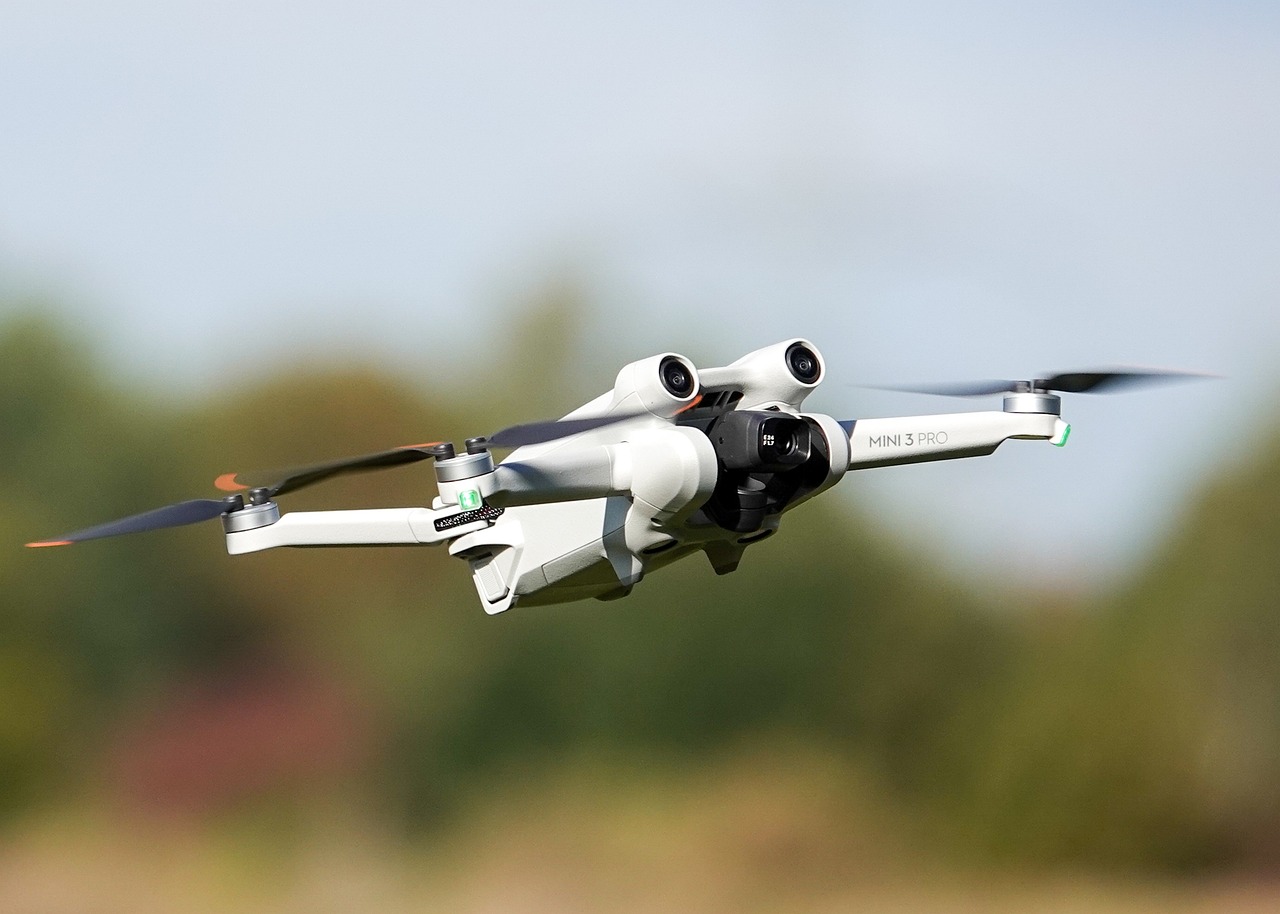
Surveillance and Reconnaissance
When it comes to modern military operations, are the backbone of strategic planning and execution. Lightweight Unmanned Vehicles (LUVs) have revolutionized how military forces gather intelligence in high-risk environments. Imagine being able to monitor enemy movements without putting a single soldier in harm's way; that’s the power of LUVs. These vehicles can fly above hostile territories, providing real-time insights that are crucial for mission success.
LUVs are equipped with cutting-edge technology, including high-resolution cameras and advanced sensors that can detect everything from troop movements to changes in the landscape. This capability allows military planners to make informed decisions based on accurate and timely data. For instance, during a recent operation, a LUV was deployed to gather intelligence on enemy positions. The data collected not only confirmed the enemy's strength but also revealed their supply routes, which were pivotal in planning the next phase of the operation.
One of the most significant advantages of using LUVs for surveillance is their ability to operate in high-risk environments. Traditional reconnaissance missions often require manned aircraft, which can be vulnerable to enemy fire or anti-aircraft systems. In contrast, LUVs can navigate through these threats with relative ease. Their small size and advanced evasion techniques allow them to avoid detection, making them ideal for missions where stealth is paramount.
Moreover, the data collected by LUVs can be transmitted back to command centers in real-time, enabling rapid analysis and decision-making. This immediacy is a game-changer, especially in situations where time is of the essence. For example, if a LUV identifies an enemy build-up, commanders can quickly adjust their strategies, deploy additional forces, or launch preemptive strikes. The speed at which information travels can mean the difference between success and failure on the battlefield.
Additionally, the integration of LUVs into surveillance operations has led to a decrease in operational costs. Traditional reconnaissance missions can be expensive, requiring fuel, maintenance, and the deployment of skilled pilots. In contrast, LUVs are generally cheaper to operate, allowing military branches to allocate resources more efficiently. This cost-effectiveness is particularly important in an era where budgets are tightening, yet the need for intelligence is growing.
However, it’s essential to recognize that while LUVs have transformed surveillance and reconnaissance, they are not without their challenges. Technical limitations, such as battery life and payload capacity, can restrict their operational range and effectiveness. Additionally, environmental factors like weather can impact their performance. Nevertheless, ongoing advancements in LUV technology continue to address these issues, making them an increasingly viable option for military operations.
In summary, the use of Lightweight Unmanned Vehicles in surveillance and reconnaissance is a testament to how technology can enhance military capabilities. Their ability to gather critical intelligence while minimizing risk to personnel represents a significant leap forward in modern warfare. As we look to the future, the role of LUVs will undoubtedly expand, further integrating into the fabric of military strategy and operations.
- What are LUVs? Lightweight Unmanned Vehicles are small, unmanned aerial systems designed for various military operations, including surveillance and reconnaissance.
- How do LUVs improve surveillance capabilities? LUVs provide real-time data collection and can operate in high-risk environments without putting personnel at risk.
- What are the main advantages of using LUVs? They offer cost-effectiveness, enhanced operational flexibility, and improved safety for military personnel.
- What challenges do LUVs face? Technical limitations, environmental constraints, and regulatory issues can impact their deployment and effectiveness.

Real-time Data Collection
In the fast-paced world of military operations, the ability to gather real-time data is nothing short of revolutionary. Lightweight Unmanned Vehicles (LUVs) are equipped with cutting-edge sensors that allow them to collect and transmit critical information instantaneously. Imagine a battlefield scenario where every second counts; having access to live data can mean the difference between success and failure. LUVs can monitor enemy movements, assess terrain conditions, and gather intelligence on potential threats, all while remaining out of harm's way. This capability not only enhances situational awareness but also empowers commanders to make informed decisions swiftly.
The technology behind real-time data collection in LUVs is fascinating. These vehicles are often outfitted with a variety of sensors, including electro-optical cameras, infrared sensors, and radar systems. Each of these plays a crucial role in the data-gathering process. For instance, electro-optical cameras provide high-resolution imagery, allowing operators to identify targets with remarkable clarity. Meanwhile, infrared sensors excel in detecting heat signatures, making them invaluable for nighttime operations or in environments with poor visibility. The integration of these technologies creates a comprehensive surveillance system that can adapt to various operational needs.
Moreover, the data collected by LUVs is transmitted in real-time to command centers via secure communication links. This immediate feedback loop allows military leaders to assess the situation on the ground without delay. The information is often displayed on advanced command and control systems, which can process and analyze incoming data for actionable insights. For example, when a LUV identifies an enemy position, commanders can quickly evaluate the threat and decide on the best course of action—whether that involves deploying ground troops, launching an airstrike, or modifying operational plans.
To illustrate the impact of real-time data collection, consider the following table that outlines key sensor capabilities commonly found in LUVs:
| Sensor Type | Functionality | Operational Benefits |
|---|---|---|
| Electro-Optical Camera | High-resolution imagery | Target identification and assessment |
| Infrared Sensor | Heat detection | Effective in low-visibility conditions |
| Radar System | Obstacle detection and tracking | Enhanced situational awareness |
LUVs also utilize advanced data analytics and artificial intelligence to process the information they collect. This means that not only do they gather data, but they also interpret it, providing actionable insights that can be crucial during operations. Imagine having an intelligent assistant that not only brings you the latest updates but also analyzes them to highlight potential threats or opportunities. This level of sophistication is what makes LUVs an invaluable asset in modern warfare.
In conclusion, the ability of LUVs to collect and transmit real-time data has transformed military operations. By leveraging advanced sensor technologies and intelligent data processing, these unmanned vehicles provide commanders with a clearer picture of the battlefield, enabling them to make quicker and more effective decisions. As technology continues to evolve, the potential for LUVs in enhancing situational awareness and operational success will only grow stronger.
- What is a Lightweight Unmanned Vehicle (LUV)?
A Lightweight Unmanned Vehicle (LUV) is a type of drone that is designed for various military applications, including surveillance, reconnaissance, and support roles.
- How do LUVs collect real-time data?
LUVs are equipped with advanced sensors that gather data and transmit it instantly to command centers, allowing for immediate analysis and decision-making.
- What types of sensors are used in LUVs?
LUVs typically use electro-optical cameras, infrared sensors, and radar systems to collect a wide range of data in various conditions.
- What are the advantages of using LUVs in military operations?
LUVs offer cost-effectiveness, enhanced operational flexibility, and reduced risk to personnel, making them a valuable asset in modern warfare.

Stealth and Evasion Techniques
When it comes to modern warfare, the need for stealth and evasion is paramount. Lightweight Unmanned Vehicles (LUVs) are designed with these principles at their core, enabling them to operate in hostile environments without drawing attention. Imagine a silent shadow, moving swiftly and unseen, gathering vital intelligence while keeping its operators safe. This is the essence of LUVs in special operations.
One of the primary techniques employed by LUVs to achieve stealth is their low radar cross-section. This means that their design minimizes the signals that radar systems can detect. By utilizing materials that absorb radar waves rather than reflecting them, LUVs can effectively become invisible to enemy detection systems. Additionally, the shape and size of these vehicles are optimized to reduce visibility, making them difficult to spot by both the naked eye and advanced surveillance technologies.
Moreover, LUVs often incorporate noise reduction technologies. Unlike traditional aircraft that can create a deafening roar, LUVs are engineered to operate quietly, which is crucial for missions requiring stealth. The use of electric propulsion systems, for instance, significantly lowers the noise footprint, allowing these vehicles to glide through the air with minimal sound. This capability enables them to conduct operations in close proximity to enemy lines without alerting adversaries.
In addition to physical design features, LUVs also utilize advanced evasion tactics. These include programmed flight paths that take advantage of natural terrain to avoid detection. For example, flying at low altitudes and navigating through valleys can help LUVs stay under the radar, both literally and figuratively. Furthermore, they are often equipped with real-time data analytics that allow them to adapt their routes based on the current threat landscape, ensuring they can swiftly change course if they detect potential danger.
Another fascinating aspect of LUV stealth is their electronic warfare capabilities. Some LUVs are equipped with systems that can jam enemy radar and communication signals, effectively blinding adversaries and allowing for safer operations. This not only enhances their own stealth but can also provide a tactical advantage to ground forces by disrupting enemy operations.
The combination of these techniques creates a formidable presence on the battlefield. As LUV technology continues to evolve, we can expect even more sophisticated methods of stealth and evasion to emerge, further enhancing their effectiveness in special operations. The future of warfare may very well depend on the silent, unseen heroes of the sky.
- What are Lightweight Unmanned Vehicles (LUVs)? LUVs are advanced drones designed for military operations, offering capabilities such as surveillance, reconnaissance, and support.
- How do LUVs achieve stealth? LUVs employ low radar cross-sections, noise reduction technologies, advanced evasion tactics, and electronic warfare capabilities to avoid detection.
- What are the advantages of using LUVs in military operations? LUVs provide cost-effectiveness, reduced risk to personnel, and enhanced operational flexibility, making them invaluable in modern warfare.
- Are there any limitations to LUV technology? Yes, LUVs face technical limitations and operational constraints, such as environmental challenges and regulatory issues.
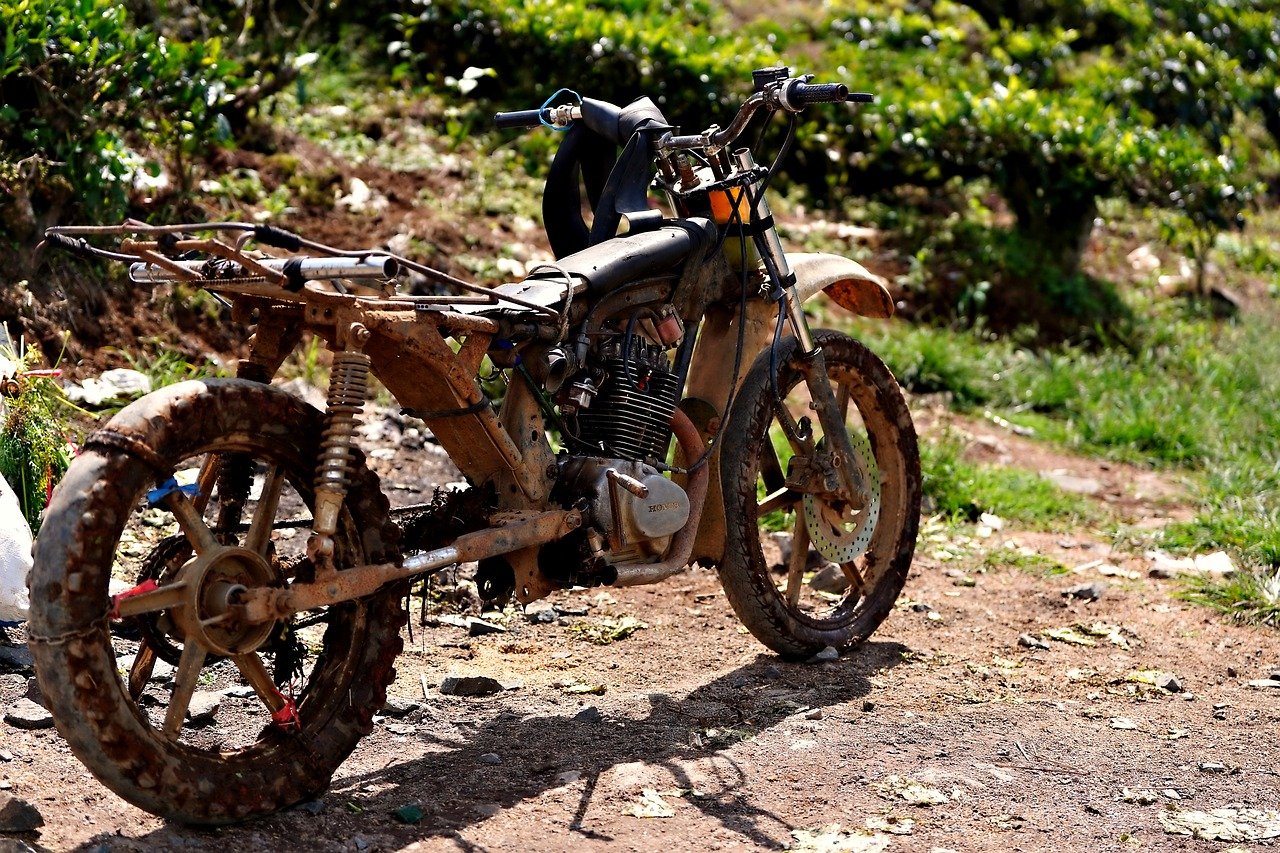
Support Roles in Combat
In the chaotic environment of modern combat, every second counts, and every advantage can mean the difference between success and failure. Lightweight Unmanned Vehicles (LUVs) have emerged as game-changers in this arena, providing critical support roles that enhance the effectiveness of ground troops. Imagine being on the battlefield, surrounded by uncertainty, and having a reliable ally in the sky that can deliver real-time information, supplies, and even direct support. This is precisely what LUVs offer.
One of the most significant contributions of LUVs in combat scenarios is their ability to assist with logistics. Traditional supply chains can be cumbersome and slow, often hampered by the dangers of enemy fire or difficult terrain. LUVs can transport essential supplies—such as ammunition, food, and medical equipment—directly to troops in the field, bypassing many of the risks associated with ground transport. This capability not only saves time but also ensures that soldiers have the resources they need to sustain their missions.
Moreover, LUVs play a vital role in communication. They can act as mobile relay stations that enhance communication between units, especially in areas where traditional communication methods may fail or be compromised. By providing a stable link to command centers, LUVs help maintain situational awareness and coordination among troops, which is crucial for executing complex operations. Imagine a scenario where ground troops are cut off from their command; a LUV swoops in, restoring communication and potentially saving lives.
Additionally, LUVs can provide direct support during engagements. Equipped with advanced sensors and sometimes even weaponry, these vehicles can conduct precision strikes or offer surveillance during critical moments, allowing ground forces to focus on their primary objectives. The ability to engage targets from a distance, without putting personnel at risk, is a powerful advantage that LUVs bring to the battlefield.
To illustrate the multifaceted roles that LUVs play in combat, consider the following table that summarizes their key support functions:
| Support Role | Description |
|---|---|
| Logistics | Transporting supplies directly to troops, reducing the risk of ground transport. |
| Communication | Acting as mobile relay stations to enhance coordination and situational awareness. |
| Direct Support | Providing surveillance and precision strikes during combat engagements. |
In conclusion, the integration of LUVs into combat operations not only enhances the effectiveness of military strategies but also significantly improves the safety and efficiency of ground troops. As technology continues to advance, we can expect these vehicles to evolve further, offering even more innovative solutions to the challenges faced in modern warfare.
- What are Lightweight Unmanned Vehicles (LUVs)? LUVs are advanced unmanned aerial systems designed for various military applications, including surveillance, reconnaissance, and direct support in combat scenarios.
- How do LUVs enhance logistics in combat? LUVs can transport essential supplies directly to troops in the field, minimizing the risks associated with traditional ground transport.
- Can LUVs be armed? Some LUVs are equipped with weaponry and can conduct precision strikes, providing direct support to ground forces during engagements.
- What role do LUVs play in communication? LUVs can act as mobile relay stations, enhancing communication and coordination among troops, especially in challenging environments.
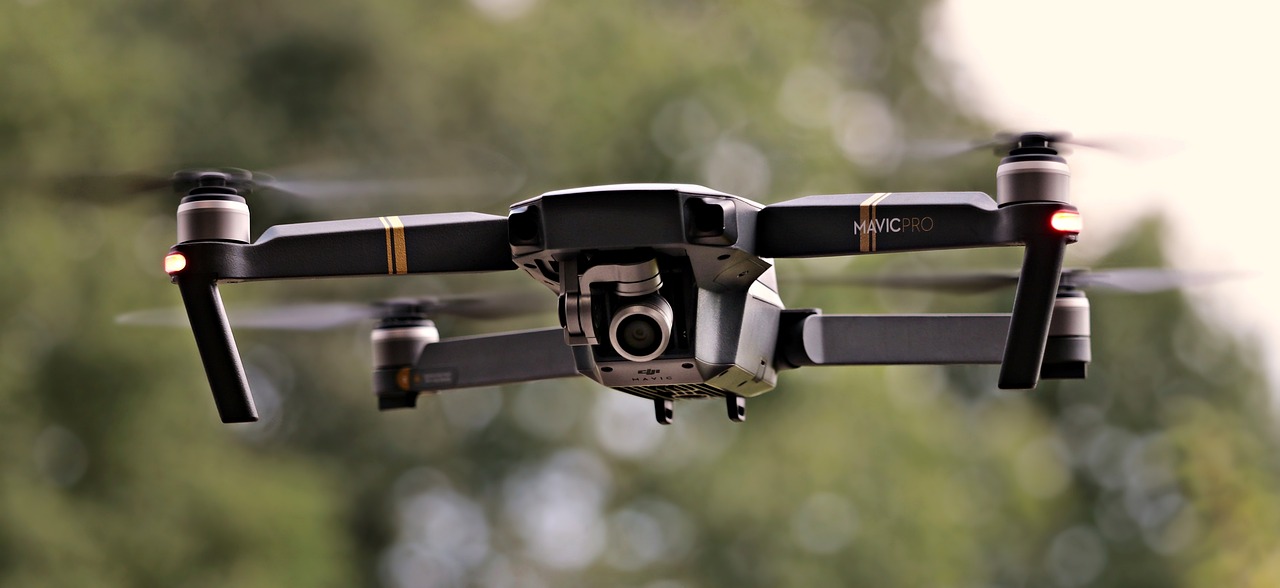
Advantages of Using LUVs
The integration of Lightweight Unmanned Vehicles (LUVs) into military operations has revolutionized the way modern warfare is conducted. These remarkable machines bring a multitude of advantages that not only enhance operational efficiency but also significantly reduce risks to personnel. Imagine having the ability to gather intelligence, conduct surveillance, and support troops without putting human lives in harm's way. This is exactly what LUVs offer, and their impact cannot be overstated.
One of the most compelling advantages of LUVs is their cost-effectiveness. Traditional military aircraft can be incredibly expensive to operate, requiring extensive maintenance, fuel, and personnel. In contrast, LUVs are generally more affordable, making them an attractive option for military budgets. For instance, the operational costs of deploying a LUV can be significantly lower compared to manned aircraft, which often necessitate a full crew and complex logistics. This financial efficiency allows military forces to allocate resources to other critical areas, enhancing overall mission readiness.
Furthermore, LUVs provide enhanced operational flexibility. Their lightweight design enables quick deployment in a variety of environments, from urban settings to rugged terrains. This adaptability means that military commanders can respond swiftly to emerging threats or changing circumstances on the battlefield. For example, LUVs can be launched from ships, ground bases, or even from the air, offering unparalleled versatility in how they can be utilized. This flexibility not only increases the chances of mission success but also allows for a broader range of operational strategies.
Another notable advantage of LUVs is their ability to reduce risk to personnel. In high-stakes situations where human lives are on the line, sending in a LUV can mean the difference between life and death. For instance, during reconnaissance missions in hostile territories, deploying a LUV to gather intelligence minimizes the exposure of soldiers to enemy fire. This capability is invaluable, especially in scenarios where the risk of ambush or attack is high. By utilizing LUVs, military forces can maintain a tactical advantage while safeguarding their personnel.
Moreover, LUVs are equipped with advanced technologies that enhance their operational capabilities. These include sophisticated sensors, cameras, and communication systems that allow for real-time data transmission. The ability to gather and relay information instantaneously is a game-changer in military operations. Commanders can make informed decisions based on current intelligence, leading to more effective strategies and outcomes. The integration of these technologies not only streamlines operations but also enhances the overall effectiveness of military missions.
In summary, the advantages of using LUVs in military operations are multifaceted. They offer cost savings, operational flexibility, and a significant reduction in risks to personnel. As military technology continues to advance, the role of LUVs is poised to grow even more prominent, shaping the future of warfare. The question remains: how will military forces continue to innovate and integrate these remarkable machines into their strategies?
- What are Lightweight Unmanned Vehicles (LUVs)? LUVs are small, unmanned aircraft designed for various military operations, including surveillance, reconnaissance, and support roles.
- How do LUVs reduce risks to personnel? By conducting missions remotely, LUVs minimize the need for human presence in dangerous environments, thereby protecting soldiers from potential threats.
- Are LUVs cost-effective compared to traditional aircraft? Yes, LUVs generally have lower operational costs due to reduced maintenance and personnel requirements, making them a budget-friendly option for military operations.
- What technologies do LUVs use for data collection? LUVs are equipped with advanced sensors, cameras, and communication systems that allow for real-time data gathering and transmission.
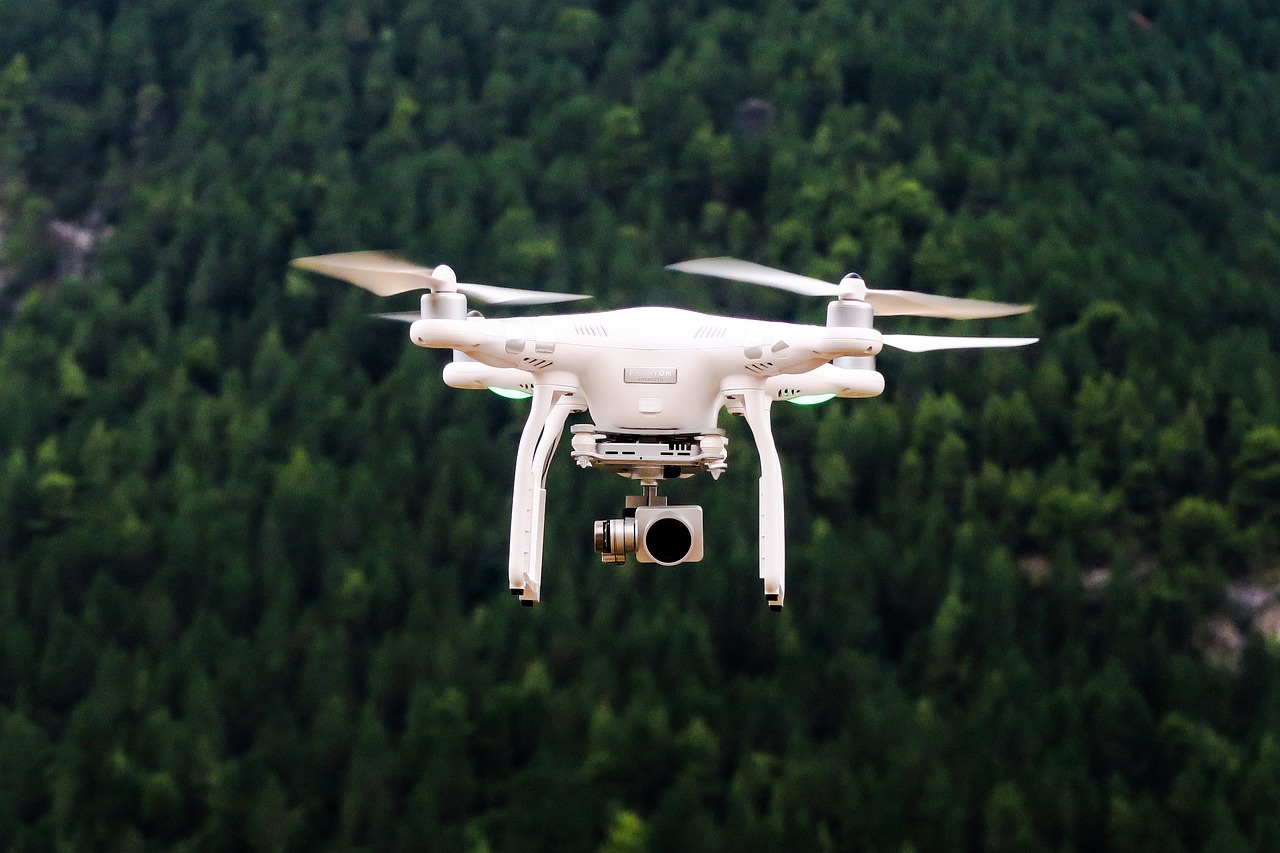
Cost-Effectiveness
When it comes to military operations, the of deploying Lightweight Unmanned Vehicles (LUVs) cannot be overstated. Traditional military aircraft and manned missions often come with hefty price tags, not only in terms of initial procurement but also in maintenance, fuel, and personnel costs. In contrast, LUVs offer a more economical solution, allowing military forces to maximize their operational capabilities without breaking the bank.
One of the key factors contributing to the cost-effectiveness of LUVs is their lower operational costs. For instance, while a manned helicopter might require a dedicated crew, extensive training, and costly fuel, a LUV can operate autonomously or be remotely piloted, significantly reducing the need for onboard personnel. This translates to less training time and fewer resources spent on human factors. Moreover, the fuel consumption of LUVs is often substantially lower than that of their manned counterparts, making them a financially savvy choice for long-duration missions.
Additionally, the initial investment in LUV technology is generally lower than that of traditional aircraft. For example, consider the following comparison:
| Aircraft Type | Initial Cost | Operational Cost (per hour) |
|---|---|---|
| Manned Helicopter | $5 million | $1,500 |
| Lightweight Unmanned Vehicle | $1 million | $300 |
This table highlights the stark differences in both initial and operational costs between manned helicopters and LUVs. The savings can be redirected towards other critical areas such as intelligence gathering, advanced training, or even upgrading existing technology.
Another factor that enhances the cost-effectiveness of LUVs is their versatility. These vehicles can be adapted for various missions, from surveillance to logistics support, which means that military forces can utilize the same platform for multiple roles. This multi-functionality reduces the need for multiple types of aircraft, further driving down costs.
In summary, the integration of LUVs into military operations presents a remarkable opportunity to achieve greater efficiency and effectiveness while maintaining a tight grip on budgets. As military strategies evolve, the adoption of cost-effective solutions like LUVs will likely become an integral part of modern warfare.
- What are the primary advantages of using LUVs over traditional aircraft?
LUVs offer lower operational costs, reduced risk to personnel, and enhanced versatility, making them a preferred choice for many military operations. - How do LUVs contribute to operational efficiency?
By providing real-time data collection and support roles, LUVs enhance situational awareness and allow for quicker decision-making in the field. - Are there any limitations to using LUVs?
Yes, LUVs can face technical limitations and operational constraints, such as environmental factors and regulatory issues, which may impact their effectiveness.

Enhanced Operational Flexibility
When it comes to military operations, flexibility is often the name of the game. The lightweight nature of Lightweight Unmanned Vehicles (LUVs) provides an unparalleled advantage in terms of deployment and adaptability. Imagine being able to quickly reposition assets in response to changing battlefield conditions—this is precisely what LUVs bring to the table. Their compact size and minimal logistical requirements allow for rapid deployment in a variety of environments, making them an essential tool for modern military strategies.
One of the standout features of LUVs is their ability to operate in diverse terrains. Whether it's dense urban settings, rugged mountains, or expansive deserts, these unmanned vehicles can be deployed effectively. This versatility means that commanders can adjust their tactics on the fly without worrying about the limitations of traditional manned aircraft. For instance, in a situation where ground forces encounter unexpected resistance, a LUV can be swiftly launched to gather intelligence or provide support, ensuring that the operation remains fluid and responsive.
Moreover, the integration of LUVs into military operations significantly enhances operational efficiency. They can be utilized for a variety of roles, including surveillance, reconnaissance, and even logistical support. This multi-functional capability means that a single LUV can replace multiple assets, streamlining operations and reducing overall costs. In essence, LUVs serve as a force multiplier, allowing military units to do more with less.
Another aspect of operational flexibility is the ability to adapt to technological advancements. LUVs can be equipped with the latest sensors and communication technologies, allowing them to evolve alongside changing military needs. For example, if a new type of sensor is developed that improves target acquisition, it can be integrated into existing LUVs without the need for extensive redesigns. This adaptability ensures that military forces remain at the cutting edge of technology, enhancing their effectiveness on the battlefield.
In addition, the operational flexibility of LUVs extends to their mission profiles. They can be deployed for a variety of missions, ranging from intelligence gathering to direct support for ground troops. This versatility ensures that commanders have a range of options at their disposal, allowing them to tailor their approach based on the specific circumstances they face. For instance, in a high-risk area, a LUV can conduct a low-altitude reconnaissance mission to gather intelligence without putting personnel in harm's way.
In conclusion, the enhanced operational flexibility offered by LUVs is a game-changer in modern military operations. Their ability to adapt quickly to various environments, integrate new technologies, and perform multiple roles makes them an invaluable asset. As military strategies continue to evolve, the role of LUVs will only become more critical, ensuring that forces can respond effectively to the ever-changing landscape of warfare.
- What are Lightweight Unmanned Vehicles (LUVs)?
LUVs are advanced military drones designed for various operational roles, including surveillance, reconnaissance, and logistics support. - How do LUVs enhance operational flexibility?
Their lightweight design allows for rapid deployment in diverse environments, enabling quick adjustments to changing battlefield conditions. - What types of missions can LUVs perform?
LUVs can be used for a range of missions, including intelligence gathering, target acquisition, and direct support to ground troops. - Are LUVs cost-effective?
Yes, LUVs are generally less expensive to operate compared to traditional aircraft, making them a cost-effective option for military operations.

Challenges and Limitations
While Lightweight Unmanned Vehicles (LUVs) offer a plethora of advantages, they are not without their . Understanding these hurdles is crucial for military strategists and operators who aim to maximize the effectiveness of LUVs in special operations. One of the most significant challenges is the technical limitations inherent in LUV technology. Despite rapid advancements, many LUVs still face issues such as limited battery life, which restricts their operational range and mission duration. This can be likened to a sprinter who, despite their speed, can only run short distances before needing a break.
Moreover, the sensors and systems onboard LUVs, while advanced, can sometimes be susceptible to interference or malfunction. In high-stakes environments, where the margin for error is razor-thin, these technical limitations can be detrimental. For instance, if a LUV's camera fails during a critical surveillance mission, the entire operation could be jeopardized, leaving ground troops in the dark about enemy movements.
Another layer of complexity arises from operational constraints. LUVs are often deployed in diverse environments that can pose unique challenges. For example, extreme weather conditions, such as heavy rain, snow, or high winds, can significantly affect the performance of LUVs. Imagine trying to fly a drone through a storm; it’s not just challenging—it can be downright impossible. These environmental factors can limit the range of effective operations and necessitate additional planning and resources.
Additionally, regulatory issues can also impact the deployment of LUVs. Many countries have strict regulations governing the use of unmanned vehicles, particularly in populated areas. This can restrict where and how LUVs can be utilized, creating a scenario where military forces may find themselves hampered by red tape when they need to act swiftly. It’s a bit like having a powerful tool in your toolbox but not being allowed to use it when the moment calls for it.
To summarize, while LUVs represent a transformative technology in military operations, they come with their own set of challenges that must be navigated. Below is a table summarizing these challenges:
| Challenge | Description |
|---|---|
| Technical Limitations | Issues such as limited battery life and sensor malfunctions can hinder operational effectiveness. |
| Environmental Constraints | Weather conditions like rain, snow, and wind can affect LUV performance and mission success. |
| Regulatory Issues | Strict regulations in various countries can limit the deployment and use of LUVs in certain areas. |
Despite these challenges, ongoing research and development aim to address these limitations. As technology continues to evolve, we can expect improvements that will enhance the operational capabilities of LUVs, making them an even more valuable asset in special operations.
- What are the main advantages of using LUVs in military operations?
LUVs offer cost-effectiveness, reduced risk to personnel, and enhanced operational flexibility, making them ideal for various missions. - How do environmental conditions affect LUV operations?
Extreme weather conditions can significantly impact the performance of LUVs, limiting their range and effectiveness in the field. - What are some common technical issues faced by LUVs?
Common issues include limited battery life, sensor malfunctions, and susceptibility to interference, which can hinder mission success. - Are there regulations governing the use of LUVs?
Yes, many countries have strict regulations regarding the deployment of unmanned vehicles, particularly in populated areas.
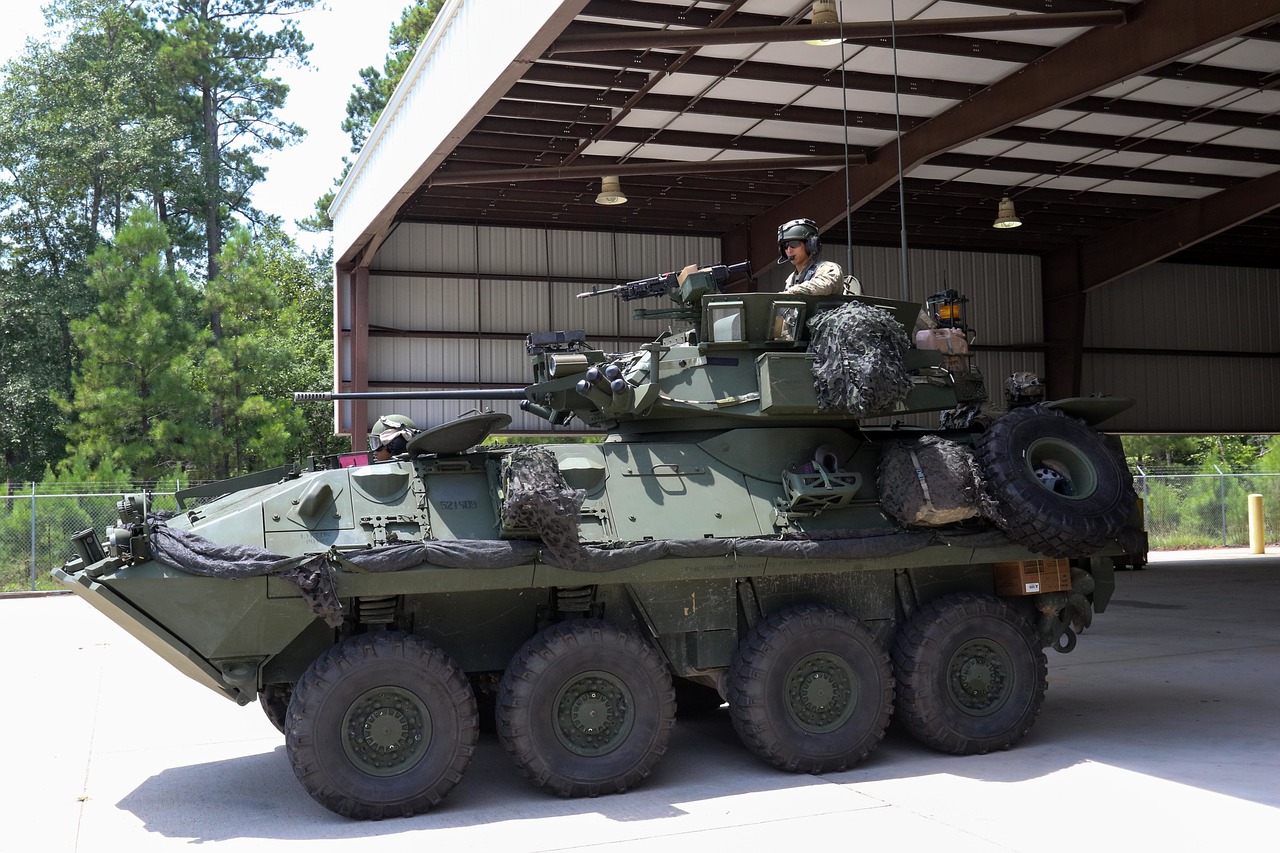
Technical Limitations
Despite the groundbreaking advancements that Lightweight Unmanned Vehicles (LUVs) have introduced to military operations, they are not without their . These challenges can significantly impact their effectiveness in the field, and understanding them is crucial for military strategists and operators alike. One of the most pressing issues is the limited battery life of many LUVs. While advancements in battery technology have been made, the operational duration of these vehicles remains a concern, especially in prolonged missions where continuous surveillance is required. Imagine sending a drone into a hostile area only to have it run out of juice before completing its mission—it's a nightmare scenario that can compromise operational success.
Moreover, the payload capacity of LUVs can also be a limiting factor. While these vehicles are designed to be lightweight and agile, this often comes at the expense of their ability to carry heavier or more sophisticated equipment. For instance, while a traditional aircraft might be able to carry advanced radar systems or multiple sensors, a LUV may be restricted to a single, less powerful sensor. This limitation can affect the quality and quantity of data collected during missions, leaving operators with a narrower view of the battlefield.
Another technical limitation is the signal range. Many LUVs rely on radio signals for communication and control, which can be disrupted by various factors such as terrain, weather conditions, or enemy interference. This can lead to a loss of control or data transmission, which is particularly problematic in high-risk environments where reliable communication is essential. In some cases, operators may need to deploy multiple LUVs to maintain coverage, which can complicate logistics and increase operational costs.
Additionally, the software and hardware integration in LUVs can pose challenges. As technology evolves, ensuring that all components work seamlessly together becomes increasingly complex. There can be instances where software updates or hardware upgrades lead to unexpected glitches, which can hinder the vehicle's performance. This is akin to upgrading your smartphone only to find that your favorite app no longer works—frustrating and potentially detrimental in a military context.
Lastly, environmental factors can also impose limitations on LUV operations. Extreme weather conditions, such as heavy rain, snow, or strong winds, can affect the stability and functionality of these vehicles. For instance, a LUV designed for surveillance may struggle to maintain altitude in strong winds, leading to compromised mission objectives. Furthermore, operating in urban environments poses its own unique challenges, such as navigating around buildings and other obstacles, which can hinder the effectiveness of LUVs.
In summary, while LUVs are revolutionizing military operations, it is essential to remain cognizant of their technical limitations. Addressing these challenges through ongoing research and development will be crucial for maximizing their potential and ensuring that they can effectively support military objectives in the field.
- What are the primary technical limitations of LUVs? The main limitations include limited battery life, payload capacity, signal range, software and hardware integration issues, and vulnerability to environmental factors.
- How does battery life impact LUV operations? Limited battery life can restrict the operational duration of LUVs, potentially compromising mission objectives if they run out of power before completing their tasks.
- Can LUVs operate in adverse weather conditions? While some LUVs are designed for various environments, extreme weather can significantly impact their performance and stability.
- What is the importance of software and hardware integration? Effective integration is crucial for ensuring that all components of LUVs function seamlessly together, as glitches can hinder performance.

Operational Constraints
When it comes to deploying Lightweight Unmanned Vehicles (LUVs) in special operations, the excitement of their capabilities often overshadows certain that can significantly impact their effectiveness. While LUVs are designed to be versatile and efficient, they are not immune to the challenges posed by the environments in which they operate. For instance, factors such as weather conditions, terrain types, and regulatory frameworks can all play a crucial role in determining how well these vehicles perform their missions.
One major constraint is the environmental conditions. LUVs are typically equipped with sophisticated sensors and technology, but their performance can be severely limited by adverse weather. High winds, heavy rain, and extreme temperatures can hinder flight stability and sensor accuracy. For example, during stormy weather, the ability of LUVs to gather reliable data diminishes, which could lead to critical gaps in intelligence. This limitation is not just a technical issue; it can have real-world implications for the success of military operations.
Furthermore, the terrain in which LUVs operate can also pose significant challenges. Urban environments, with their tall buildings and complex layouts, can interfere with the vehicle's communication systems and navigation. In contrast, rugged terrains like mountains or dense forests can limit the range and operational capabilities of LUVs. These factors necessitate careful planning and sometimes even the modification of missions to account for the operational landscape.
Another layer of complexity comes from regulatory issues. The use of LUVs is often governed by strict military protocols as well as international laws. Compliance with these regulations is essential, but it can also slow down the deployment process. For instance, obtaining the necessary permissions for airspace usage or adhering to rules of engagement can create delays, which may jeopardize the timing of an operation. Additionally, there are ethical considerations regarding surveillance and data collection that must be taken into account, especially in conflict zones where civilian populations are present.
In summary, while LUVs offer revolutionary capabilities in special operations, their deployment is not without challenges. Understanding and addressing these operational constraints is essential for maximizing their effectiveness. As technology evolves, it will be critical for military strategists to develop innovative solutions that mitigate these constraints, ensuring that LUVs can perform optimally in a variety of scenarios.
- What are the primary operational constraints faced by LUVs?
Environmental conditions, terrain types, and regulatory issues are the main constraints affecting LUV operations. - How do weather conditions impact LUV performance?
Adverse weather can hinder flight stability and sensor accuracy, reducing the reliability of data collected. - Are there specific regulations governing the use of LUVs?
Yes, LUVs must comply with military protocols and international laws, which can affect deployment and operational timelines. - Can LUVs operate effectively in urban environments?
While they can, urban environments present unique challenges such as communication interference and navigation difficulties.
Frequently Asked Questions
- What are Lightweight Unmanned Vehicles (LUVs)?
Lightweight Unmanned Vehicles (LUVs) are advanced military drones designed for a variety of applications, including surveillance, reconnaissance, and support roles in combat. They are characterized by their lightweight design, which allows for enhanced maneuverability and operational flexibility in various environments.
- How do LUVs enhance military operations?
LUVs significantly enhance military operations by providing real-time intelligence, reducing risks to personnel, and offering logistical support. Their ability to operate in high-risk areas without putting human lives at risk makes them invaluable in modern warfare.
- What are the primary applications of LUVs in military settings?
LUVs are primarily used for surveillance, reconnaissance, target acquisition, and direct support in combat operations. They are equipped with advanced sensors that allow them to gather critical data and provide support to ground troops in real-time.
- What advantages do LUVs offer over traditional military aircraft?
One of the main advantages of LUVs is their cost-effectiveness. They are generally less expensive to operate than traditional aircraft, which allows military forces to allocate resources more efficiently. Additionally, their lightweight nature enables quick deployment and adaptability to various mission requirements.
- Are there any challenges associated with using LUVs?
Yes, despite their numerous advantages, LUVs face challenges such as technical limitations and operational constraints. Technical issues can arise from the evolving nature of LUV technology, while operational constraints may include environmental factors and regulatory issues that affect their deployment.
- How do LUVs collect real-time data?
LUVs are equipped with sophisticated sensors and cameras that enable them to gather real-time data during missions. This information is crucial for decision-making processes and enhances the effectiveness of military operations by providing timely intelligence.
- What stealth techniques do LUVs employ?
LUVs are designed with stealth technology that minimizes their radar signature, making them less detectable by enemy forces. This allows them to conduct missions in hostile environments with a lower risk of being intercepted or targeted.
- Can LUVs operate in adverse weather conditions?
While LUVs are designed to be versatile, their operational effectiveness can be impacted by severe weather conditions. Factors such as high winds, heavy rain, or snow can hinder their performance, and careful consideration is needed when deploying them in such environments.









